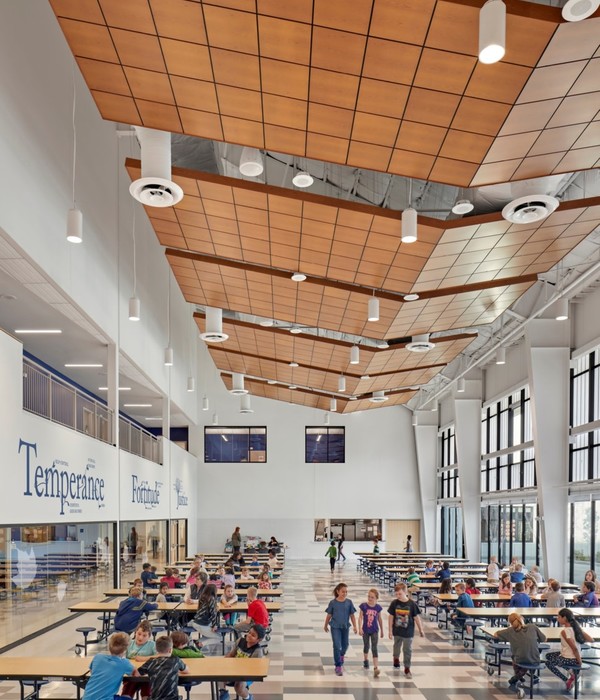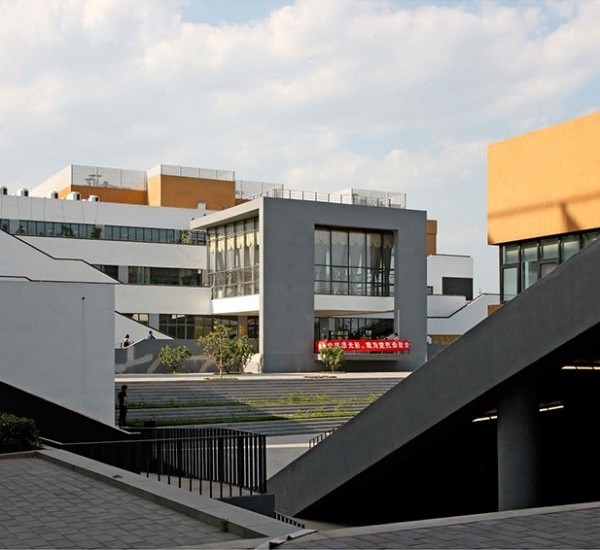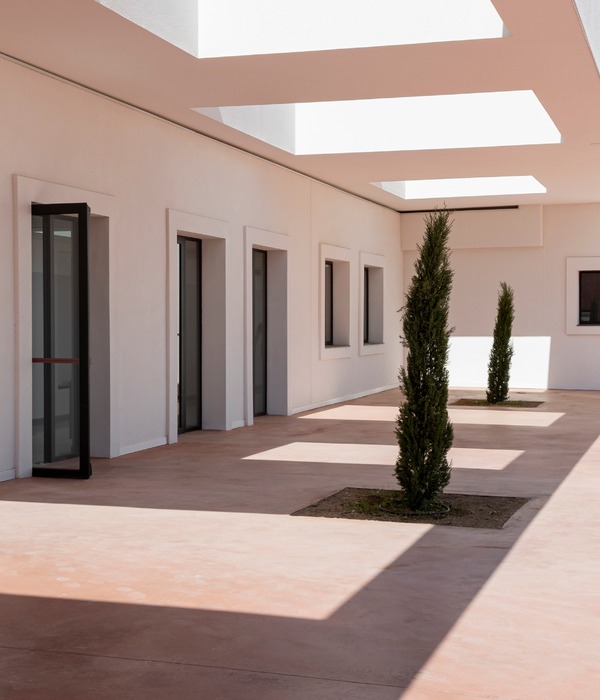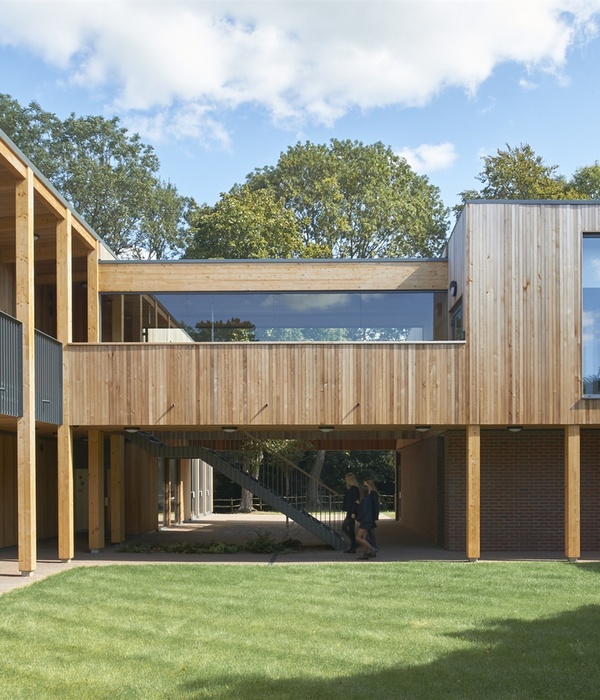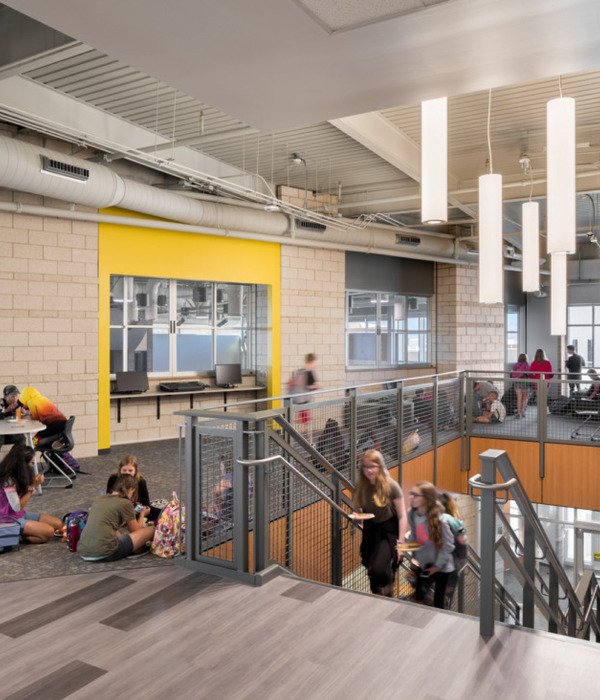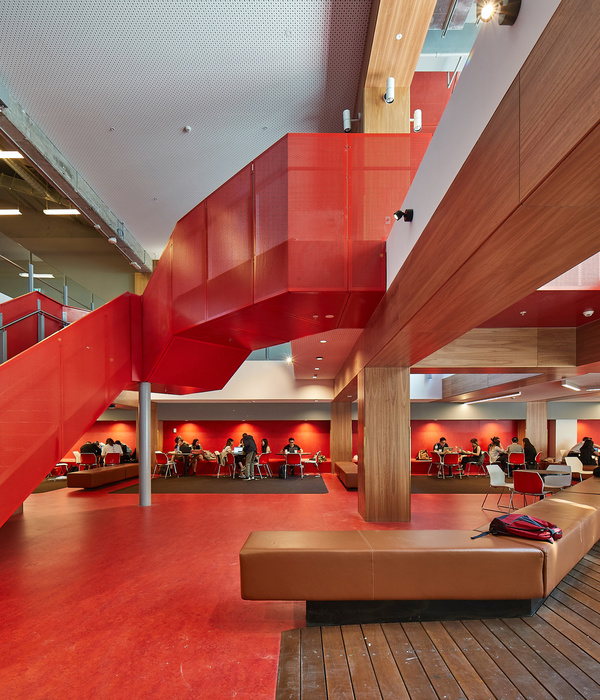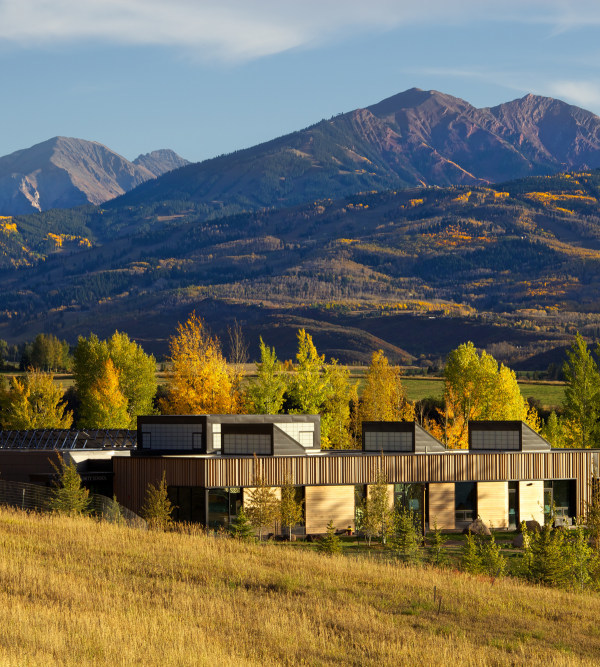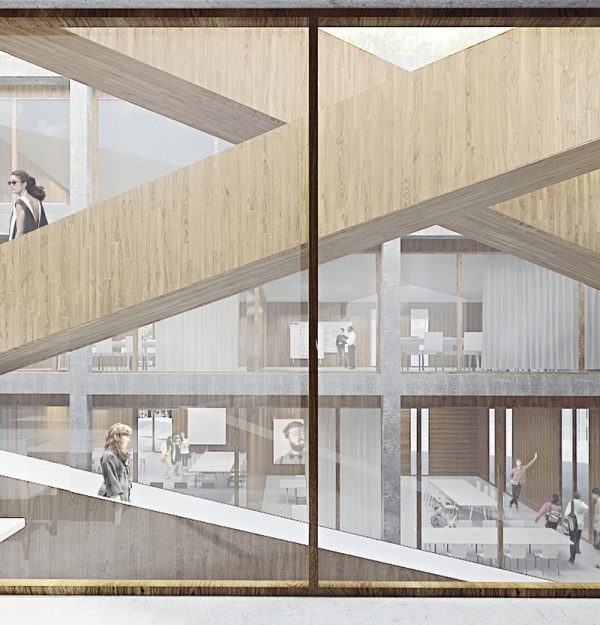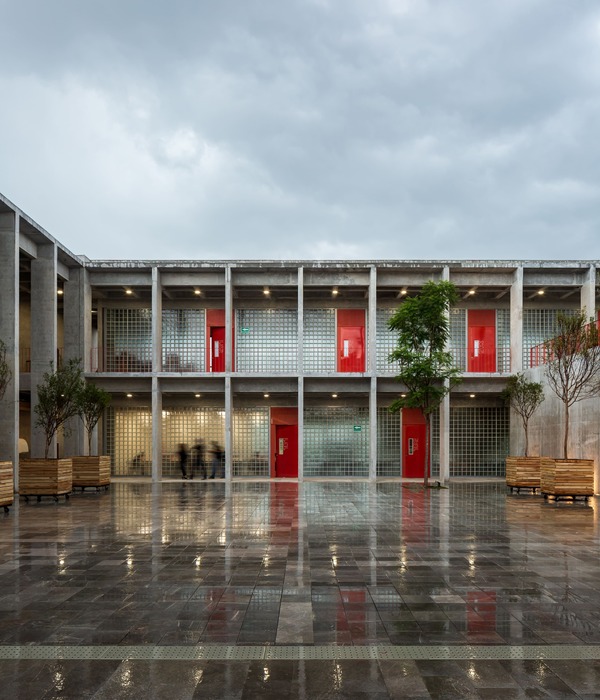The framework to be restored was an old barracks in the historical city centre of Verona. The first military building dates back to the first half of the XVIIth century while the final structure was probably completed in 1852 by Habsburg engineers who tried to carry out a general reorganization of all the military buildings in town. During the XXth century, modifications were carried out by the Italian army and, at a later stage, by the city council. The four storey building (attic included) had an almost rectangular plan and reflected the usual distrubution of modular rooms opening on a long lateral corridor, which was the typical scheme to be found in linear bodied barracks. The structure had also a very large inner yard, part of which was originally accupied by small buildings, like the old kitchens, which were meant to provide various services to the barracks. Between 1997 and 2001 the west wing of the building was restored and the council (Ater) decided to turn it into a residence for the elderly,while the east wing, i.e. the inner yard and the kitchens, was the object of the ensuing project which also included both the roof and the attic belonging to the portion of the building formerly restored. The reason for this was to provide the five flats with the necessary improvements so as to make them more comfortable. There were both monumental and town planning restrictions on the structure since the city council had included it in a vaster area, together with the ex Santa Marta barracks, destined to subsidized housing. The Fondazione Cariverona's decision to acquire the ownership of the entire structure offered the possibility to restore the east wing, which had been abandoned for decades, thus offering a chance to face the issues of preservation and enhancement in positive terms with a view to public interest. The aim of the project was to create within the east wing thirteen resident units, of various sizes, for the needy and the homeless; to this effect the old kitchens building had to be restored as well as part of the yard; the latter was turned into small vegetable gardens looked after by the tenants themselves, while the former was restored with an eye both to its historical value and integrity and also to the enhancement of heat/cold insulation performance by means of extremely efficient doors, windows, shutters, and walls. The installation of devices for the control of room temperature and air condtioning was meant to provide further comfort to the tenants. The aim of the project, therefore, was the preservation, restoration of the building and its utilization for public housing purposes while reducing structural intervention to a minimum, this being anticipated by an accurate analysis of the extant structures, fittings and fixtures. As far as the methodological aspect is concerned, such issues as reversibility, the possibility to detect additions and integrations, and the use of local materials, have all been taken into serious consideration. Bearing in mind both the social and geopolitical assumptions which influence restoration activities, the request for economic, social and environmental sustainability has been in this case utterly satisfied. It is obvous, in fact, that when we operate on what has been already built, the best answer to a reduction of any ecological footprint is to preserve as much as possible of what is still extant.
Status Completed works
{{item.text_origin}}

